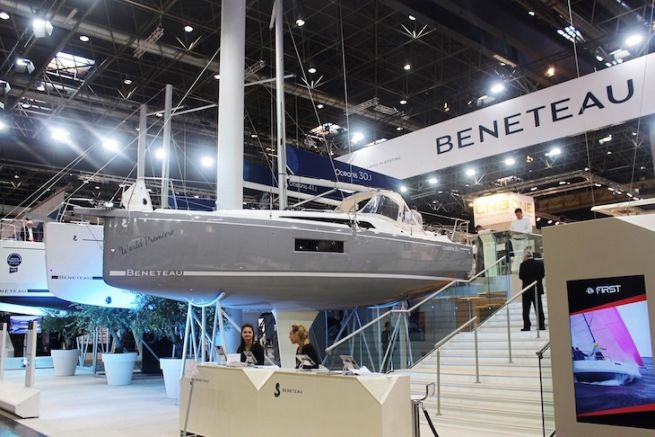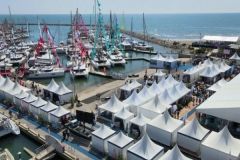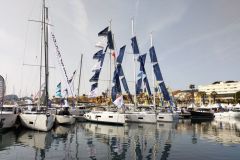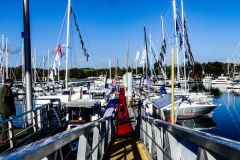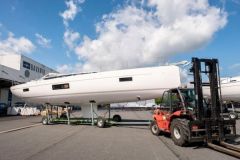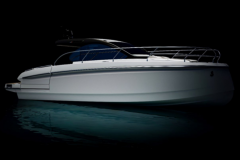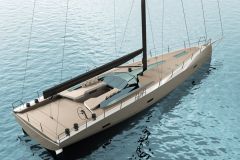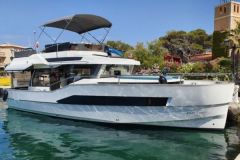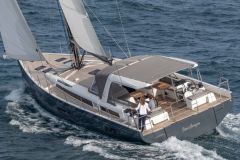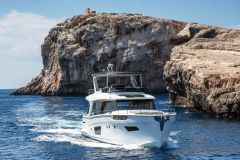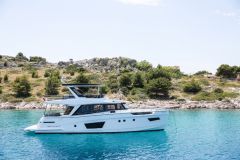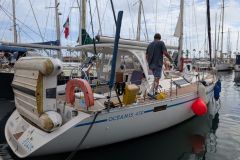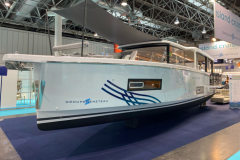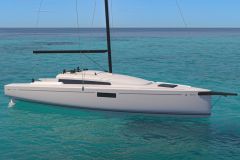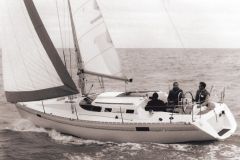The smallest of the Oceanis - Bénéteau's cruising range - offers a lot for its size. We feel that the shipyard knows its subject and goes straight to the point by surrounding itself with the Cabinet Finot-Conq and Nauta (for the interior design).
Creating under constraints is exciting for architects like those of the Vannes-based firm. In order to replace the slightly larger Océanis 31, their mission was complex: to reduce the boat's dimensions while gaining precious centimeters on deck and inside, which will make the difference in terms of habitability and comfort. But the specifications don't stop there, since this Bénéteau counts the large Océanis Yacht in its family.

Although the youngest of the range, it must be elegant and rewarding. If this sailboat targets users sensitive to simplicity of use, it must also be efficient in its coastal cruising program and financially accessible.
A boat in the air of time with a maximum of volume
One might fear that such volume would be achieved at the expense of aesthetics, but the designers have found the right proportions between the freeboard and the roof.
Contacted by the editors, the architects explain: "This is a whole new generation of hull, with different curves and volume distributions. This design comes from the recent Océanis 46.1, which showed very good performance."
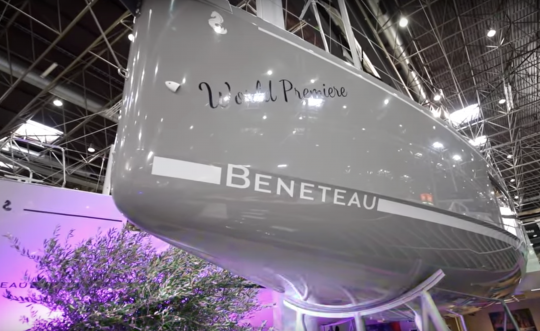
The hull, necessarily quite round, gives volume to the layout. The bow and stern are straight to save precious centimeters of hull and deck space. With almost vertical planking at the stern, the chines give stability and power to the hull, with maximum volume in the aft cabin and the storage locker. At the bow, the chine becomes a step, to gain a few extra centimeters in the forward cabin, while supporting the boat at the list.
The bow is chubby, a sign of power, as seen on the latest plans of the Finot-Conq firm, renowned for its fast cruising yachts.
To steer the Oceanis 30.1, the architects have chosen the bi-safran " For us, it was an obvious choice explains David de Prémorel, before adding "Only the two-safran can provide good control when heeling. Moreover, with the integral dinghy or with the lifting keel version, the mono-safran was too long". The firm suggests that the lifting keel version will be the most efficient.
Rigging and simple deck plan
The specifications target a use focused on simplicity, so on the Océanis 30.1 you will not find a backstay to hold the masthead, no mainsail track to adjust the incidence, but a delphinière and a self-tacking jib in the basic version with only 3 winches. The fittings are minimalist and this is not a defect, it will be necessary to confirm with use if they are not a little undersized like the 20 piano winches.
Obviously, this boat is not intended for intensive use in rough seas. The location of the sheeting winches is definitely dictated by the search for an anchor-friendly cockpit, but they are not ideally placed for easy maneuvering.

A double steering wheel version is available, on a 9 m boat, the sitting position between the balcony and the steering wheel is cramped. One may wonder about this option on a yacht of less than 9 m. But it is clear that the result is satisfactory if you don't helm much, and you will appreciate the cockpit table and its roll bar that are always in place.
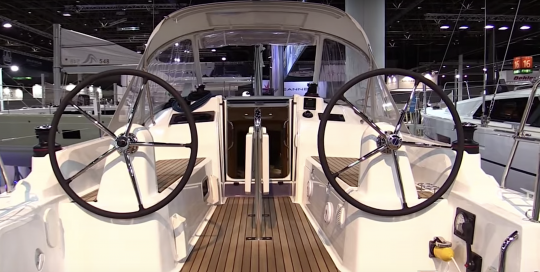
The cockpit seems welcoming, when you sit down, there is a small disappointment concerning the coamings, too low to be comfortable. On the starboard side, in the cockpit, we open a very large storage box, too deep to be practical.
Circulation on deck is not a problem, but the wide roof limits the size of the gangways allowing access to the bow. The foredeck is cluttered by the roof, which extends far out, but it is flat, so you can move around safely to access the anchor locker or the mooring cleats.
Under the bridge, volume and luminosity
Upon entering the car, the first impression is very favorable. It is clear and spacious. A large hull porthole gives a very pleasant luminosity on board. The descent is gentle (3 steps at almost 35°). To reach 1,98 m of height under beam in the central part of the boat, the floors are at the level of the apparent floors.
The impression of volume of the square is very pleasant. After a few moments, one has the feeling that something is missing. It is the usual equipment along the planking. The storage space is therefore limited to the spaces available under the benches.
The center cabinet, with its table flaps, offers some additional storage.
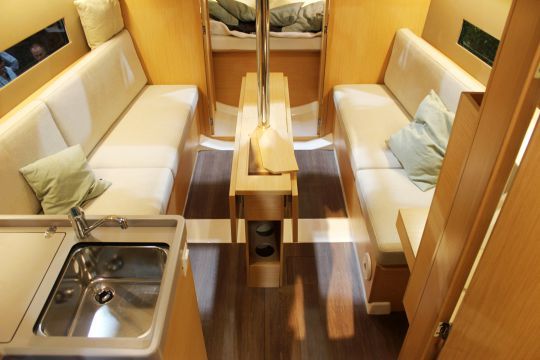
At the bottom of the companionway, on the port side, the L-shaped galley is functional, again with little storage space. It is equipped with a 75-liter fridge and an oven. The large bathroom is divided between a toilet on one side and a shower-bath on the other.
The forward cabin is really spacious for this size of boat. It is cleverly equipped with a double flap door that greatly increases the overall impression of volume of the boat.
To reach 1.85 m height in the cabins, they are without floor. In the front, when entering, you go down a small level and put your feet on the counter-mould. In the aft cabin, however, the lack of floors is problematic: due to the very rounded hull section, you slip on the non-slip surface of the hull counter-mould. This is neither comfortable nor practical, but it allows maximum headroom.
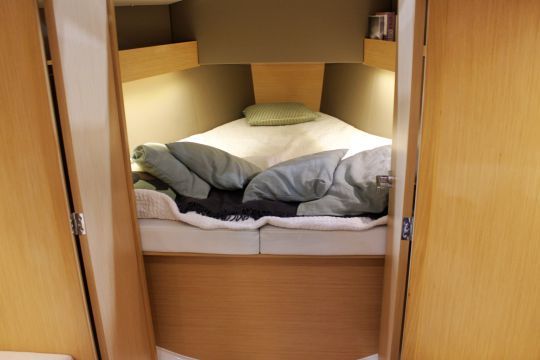
Transportable by road ?
Bénéteau insists on the fact that the Oceanis 30.1 is transportable, but don't imagine towing the boat behind your SUV, it is almost 4 tons empty. We can still consider a professional transport at acceptable prices. The 3 m width, imposed in the specifications, allows above all a reasonable transport cost to export this boat throughout Europe from Poland, its country of manufacture.
Different versions of bowling pins

